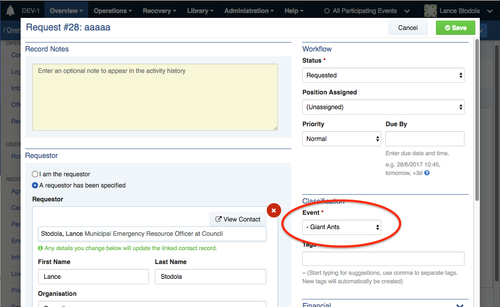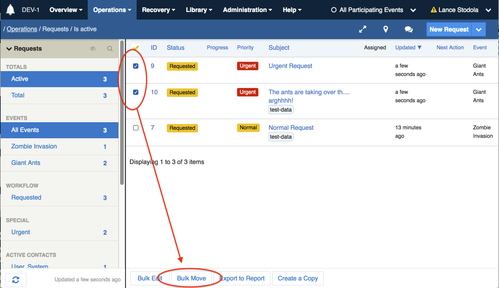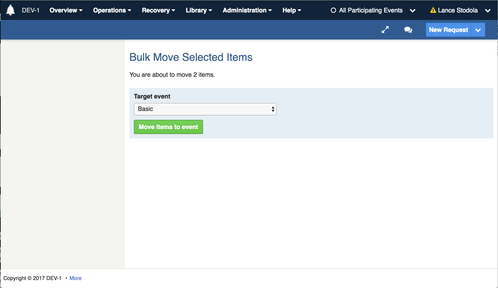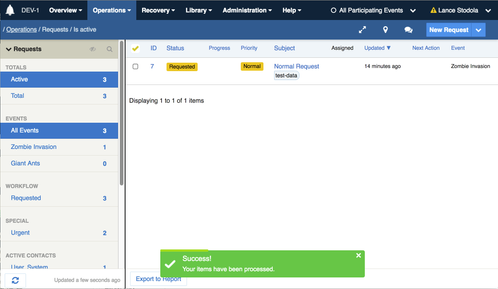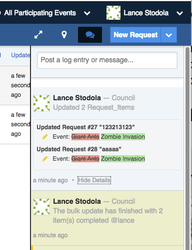Moving records between events
Records can be moved between events to allow you to reorganise your events.
How to move records
Records can be moved individually or in bulk.
You must be on duty with a position that allows this. If unsure, check a positions access permissions.
To move a single record between events
Step one: Ensure you are on duty to both events
Step two: Edit the record you wish to move, locate the "Event" field and select the new event from the list. Optionally add a comment for audit purposes.
Step three: Press Save
To move multiple records between events
Crisisworks registers support Bulk Move functionality, which allows you to move multiple records between events at once.
Step one: Ensure you are on duty in both events
Step two: From the Datagrid, select one or more records to move, then click Bulk Move from the bottom of the datagrid.
Step three: Select the new event to move the records, then click Bulk Move to move the items
The system will move the selected items immediately if under 20 items are selected, or it will schedule the move to occur in the background if more items are selected.
You will be notified by a message on the datagrid as to the status of the move, and will be notified via the message sidebar and via email when the move has competed.
How moving records affects related records
Crisisworks makes it easy to create highly structured, related datasets using linked sub forms — for example, the requestor sub-form embedded within a request form, or the applicant sub-form within the recovery case form — so it is important to understand how these related records are moved when you move the parent record.
Crisisworks automatically moves composed "sub-records" when moving its parent record, but does not move associated records.
To understand the difference between composed and associated:
- A sub-record is composed when it is entered within a parent form and only exists for that record — for example, the Crisisworks recovery module allows multiple "Affected Private Asset" records to exist for a case record. Requestors entered as part of a request are also typically composed.
- A sub-record is associated when it contains more than one relation to different records —for example, single requestor record being related to multiple requests.
In practice, this means data entered as part of the form will normally be moved, and you only need to consider sub-records that have the ability to be searched and linked — these have been designed for multiple linking, and thus will normally remain in their own event. You are free to move these in a separate move action (e.g. first move the requests, then secondly move the requestors/contacts).
When a parent item is moved and its related item is not moved, the relationship spans both events. This is fine, but it means that users viewing and editing these records should be authorised to access both events, in order to see the full record.
How moving records affects audit history
Crisisworks maintains a rich audit history for each record, and this audit history is stored within the event.
When moving an item between events, the existing audit history remains in the source event for historical audit purposes, and new changes to the record after it has moved will be recorded into the new event.
What this means is in order to view the complete audit history for an item, the user must have access to both events.
